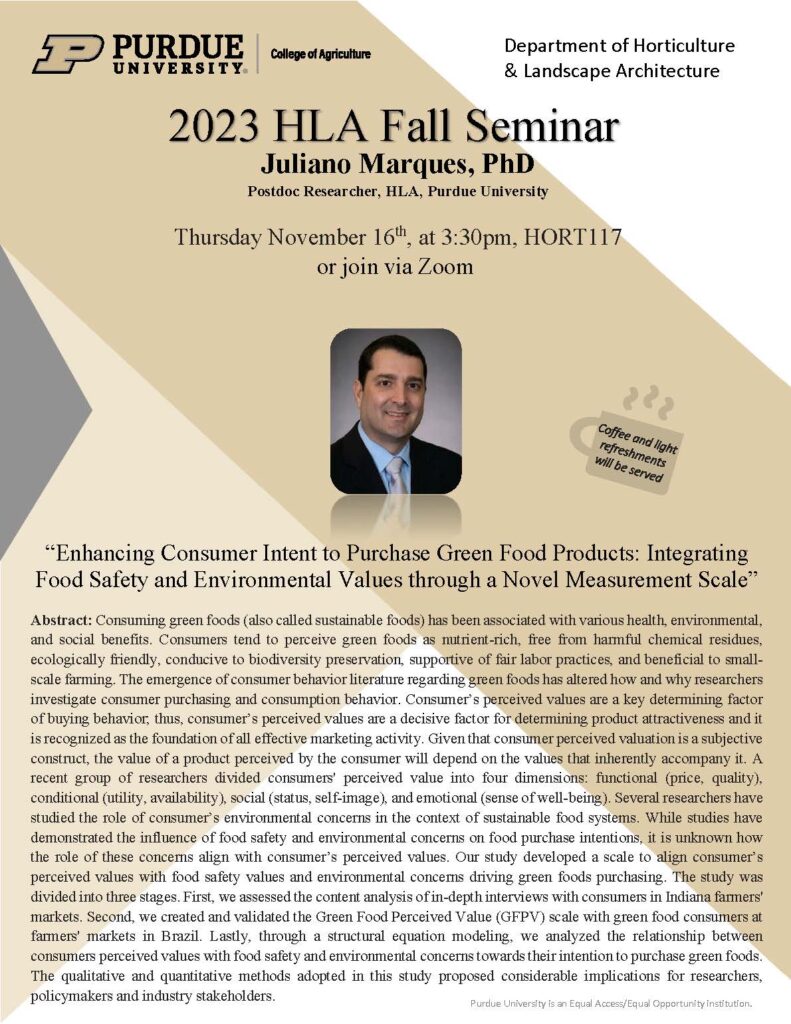
Juliano Marques, PhD
Postdoc Researcher, HLA, Purdue University
Thursday November 16th, at 3:30pm,
HORT 117 or join via Zoom
“Enhancing Consumer Intent to Purchase Green Food Products: Integrating Food Safety and Environmental Values through a Novel Measurement Scale”
Abstract: Consuming green foods (also called sustainable foods) has been associated with various health, environmental, and social benefits. Consumers tend to perceive green foods as nutrient-rich, free from harmful chemical residues, ecologically friendly, conducive to biodiversity preservation, supportive of fair labor practices, and beneficial to small-scale farming. The emergence of consumer behavior literature regarding green foods has altered how and why researchers investigate consumer purchasing and consumption behavior. Consumer’s perceived values are a key determining factor of buying behavior; thus, consumer’s perceived values are a decisive factor for determining product attractiveness and it is recognized as the foundation of all effective marketing activity. Given that consumer perceived valuation is a subjective construct, the value of a product perceived by the consumer will depend on the values that inherently accompany it. A recent group of researchers divided consumers’ perceived value into four dimensions: functional (price, quality), conditional (utility, availability), social (status, self-image), and emotional (sense of well-being). Several researchers have studied the role of consumer’s environmental concerns in the context of sustainable food systems. While studies have demonstrated the influence of food safety and environmental concerns on food purchase intentions, it is unknown how the role of these concerns align with consumer’s perceived values. Our study developed a scale to align consumer’s perceived values with food safety values and environmental concerns driving green foods purchasing. The study was divided into three stages. First, we assessed the content analysis of in-depth interviews with consumers in Indiana farmers’ markets. Second, we created and validated the Green Food Perceived Value (GFPV) scale with green food consumers at farmers’ markets in Brazil. Lastly, through a structural equation modeling, we analyzed the relationship between consumers perceived values with food safety and environmental concerns towards their intention to purchase green foods. The qualitative and quantitative methods adopted in this study proposed considerable implications for researchers, policymakers and industry stakeholders.